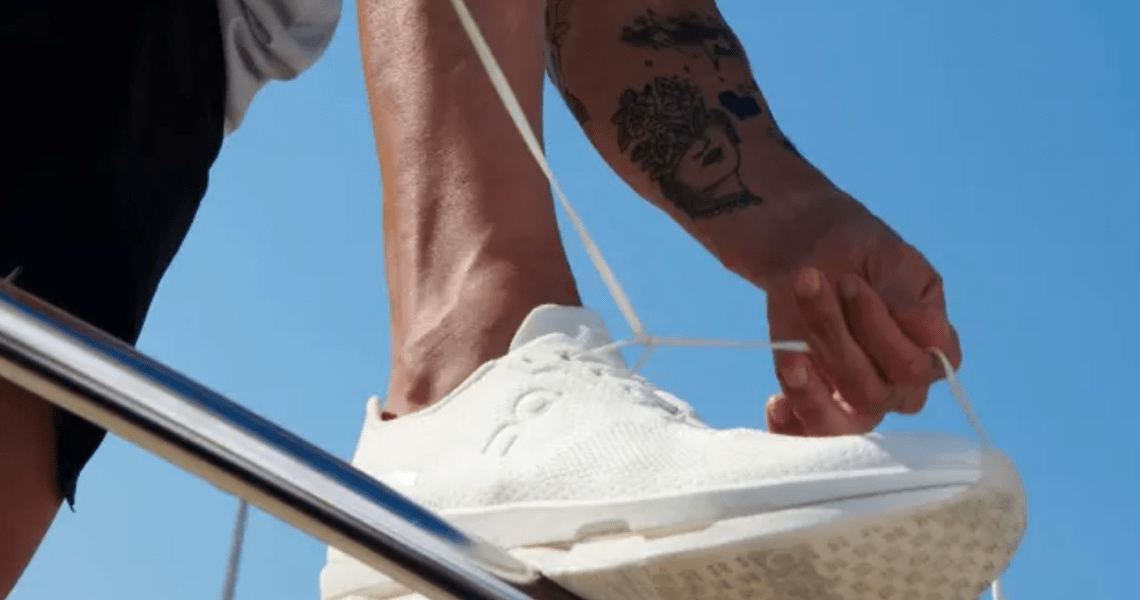The streetwear and sneaker markets have long been dominated by a few titanic brands. Nike is the perennial king of sneakers, with Adidas close behind. And the rest of the market is made up of a smattering of other big brands like Vans and Supreme.
But new data provided to Glossy by StockX shows that a number of up-and-coming brands are shaking up the sneaker and streetwear markets, both by attracting a lot of interest on the resale side of the business and doing buzzy collaborations with other brands.
Among the list of brands newly emerging on StockX is the British men’s streetwear label Represent. Represent was founded in 2011 by brothers George and Mike Heaton and has enjoyed a quiet fanbase since then. But in the last 12 months, the brand has blown up.
According to StockX, Represent is the fastest-growing brand on the marketplace, with a 385% increase in sales on StockX in 2023. That growth has primarily been driven by sneakers, a category Represent launched in 2015. It’s released several sneaker models in the years since, culminating in a collaboration with StockX on a sneaker release in July. In 2023 so far, Represent surpassed $60 million in sales with more collaborations and releases planned for the rest of the year. StockX regularly collaborates with the brands featured on its marketplace, but they’re not typically bestsellers.
“Our launch calendar is stacked week by week for the remainder of 2023. And we’re currently working on two collaborations for late 2024, which is something I can’t wait to launch,” said Represent co-founder George Heaton in July.
Other brands that StockX’s data showed to be fast-growing include Sp5der and Denim Tears, both launched in 2019. Sp5der, founded by the rapper Young Thug, saw its sales on StockX increase by 224% this year. Meanwhile, Denim Tears, founded by Supreme creative director Tremaine Emory, grew by 181%.
“Success on the secondary market can be a barometer for consumer demand. Our [data] shows that, despite a more difficult retail environment, brands are still breaking through and demonstrating growth,” said StockX CEO Scott Cutler. “We expect the brands on this list to perform well in the coming months and through the Q4 holiday season.”
Ad position: web_incontent_pos1
Not every rising brand on StockX is new or independent. One of the most surprising findings from StockX’s data is the rise of running brands including On Running and Asics. Known primarily as performance-sneaker brands catered to runners, both On and Asics are swiftly becoming the kind of streetwear phenomenon that other functional brands like Carhartt and Champion have transformed into in years past.
In the last year, Asics’ sales on StockX grew by 72% and On’s grew by over 15,000%. Both brands’ profiles among sneakerheads were significantly raised by collaborations with big names in the subculture like Kith.
“Asics is cementing its position as one of the hottest emerging brands in sneaker culture,” said Drew Haines, merchandising director of sneakers and collectibles at StockX. “They dropped a collaboration with [streetwear label] JJJJound in August 2022, and since then, trades have increased nearly every month. Almost out of nowhere, the brand is experiencing hockey-stick growth. July was a record month for Asics on StockX, and just two weeks into August, we’re on pace to surpass that record again.”
Meanwhile, in the last year, On has collaborated with both Kith and Loewe, touching both sides of the streetwear-luxury world.
But it’s not just the collaborations that are selling well. Both brands’ regular shoes are selling well on StockX’s platform, too, Haines said. This indicates that it’s not just the names like Kith and Loewe that consumers are showing up for.
Ad position: web_incontent_pos2
“Those [collaborations] are fueling high-price premiums on the secondary market,” Haines said. “But perhaps even more impressive is the demand we’re seeing for [these brands’] general release models. These are sneakers that are more widely distributed to retailers, and they’re now selling out and difficult to find on the primary market.”


